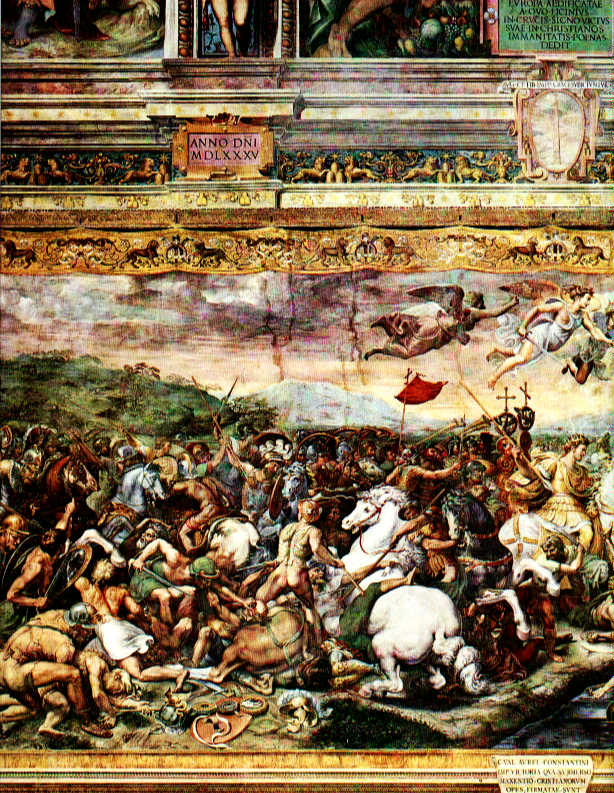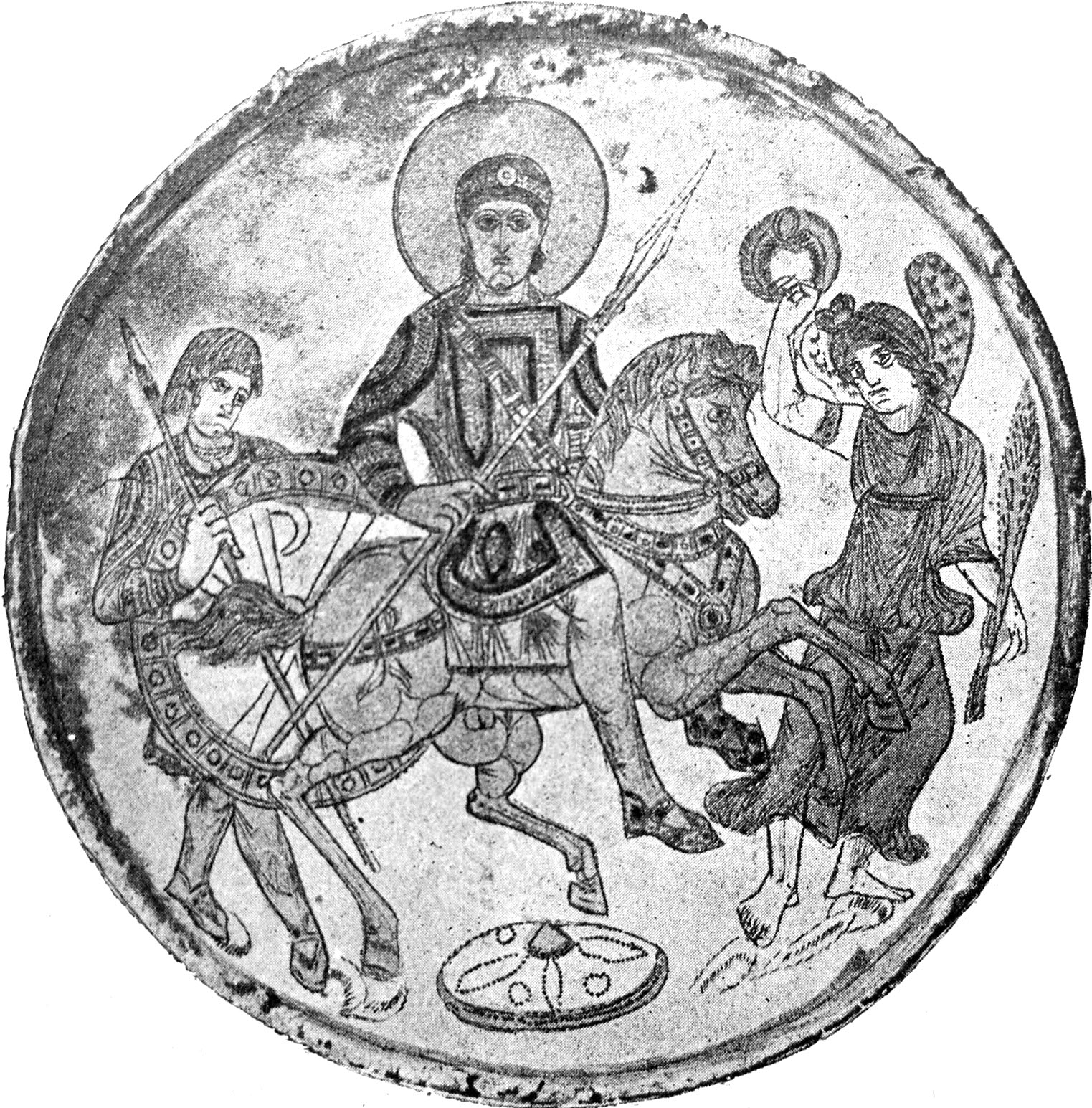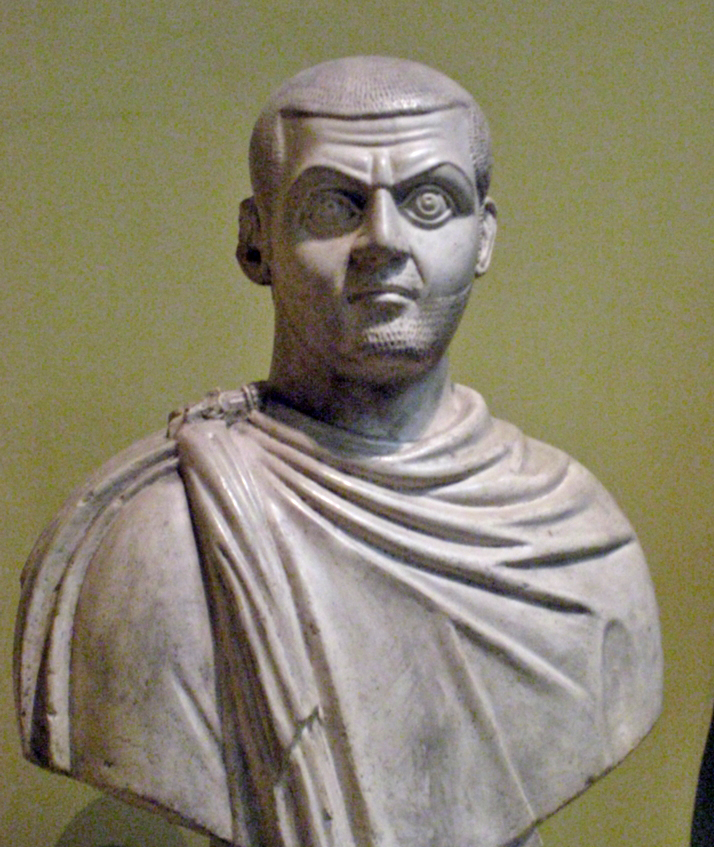|
Battle Of Tzirallum
The Battle of Tzirallum was part of the civil wars of the Tetrarchy fought on 30 April 313 between the Roman armies of emperors Licinius and Maximinus. The battle location was on the "Campus Serenus" at Tzirallum, identified as the modern-day town of Çorlu, in Tekirdağ Province, in the Turkish region of Eastern Thrace. Sources put the battle between 18 and 36 Roman miles from Heraclea Perinthus, the modern-day town of Marmara Ereğlisi. Background After the death of Galerius in AD 311, there remained four emperors in the Roman world: Constantine I, who controlled Gaul, Spain, and Britain; Maxentius, in Africa and Italy; Maximinus Daza in Roman Asia and Egypt; and Licinius in Macedonia, Greece, and Illyricum.''An Encyclopedia of World History'', (Houghton Mifflin Company, Boston, 1952), ch. II., ''Ancient History'', p. 119 The expansionist ambitions of Maxentius and Maximinus led to a bellicose alliance of these princes against Constantine and Licinius, with the under ... [...More Info...] [...Related Items...] OR: [Wikipedia] [Google] [Baidu] |
Civil Wars Of The Tetrarchy
The Civil Wars of the Tetrarchy were a series of conflicts between the Tetrarchy, co-emperors of the Roman Empire, starting in 306 AD with the usurpation of Maxentius and the defeat of Flavius Valerius Severus, Severus and ending with the defeat of Licinius at the hands of Constantine I in 324 AD. Background The Tetrarchy was the administrative division of the Roman Empire instituted by Roman emperor Diocletian in 293 AD, marking the end of the Crisis of the Third Century and the recovery of the Roman Empire. The first phase, sometimes referred to as the Diarchy ("the rule of two"), involved the designation of the general Maximian as co-emperor – firstly as ''Caesar (title), Caesar'' (junior emperor) in 285, followed by his promotion to ''Augustus (title), Augustus'' in 286. Diocletian took care of matters in the Eastern regions of the Empire while Maximian similarly took charge of the Western regions. In 293, feeling more focus was needed on both civic and military problem ... [...More Info...] [...Related Items...] OR: [Wikipedia] [Google] [Baidu] |
Roman Britain
Roman Britain was the period in classical antiquity when large parts of the island of Great Britain were under occupation by the Roman Empire. The occupation lasted from AD 43 to AD 410. During that time, the territory conquered was raised to the status of a Roman province. Julius Caesar invaded Britain in 55 and 54 BC as part of his Gallic Wars. According to Caesar, the Britons had been overrun or culturally assimilated by other Celtic tribes during the British Iron Age and had been aiding Caesar's enemies. He received tribute, installed the friendly king Mandubracius over the Trinovantes, and returned to Gaul. Planned invasions under Augustus were called off in 34, 27, and 25 BC. In 40 AD, Caligula assembled 200,000 men at the Channel on the continent, only to have them gather seashells ('' musculi'') according to Suetonius, perhaps as a symbolic gesture to proclaim Caligula's victory over the sea. Three years later, Claudius directed fo ... [...More Info...] [...Related Items...] OR: [Wikipedia] [Google] [Baidu] |
Bosphorus
The Bosporus Strait (; grc, Βόσπορος ; tr, İstanbul Boğazı 'Istanbul strait', colloquially ''Boğaz'') or Bosphorus Strait is a natural strait and an internationally significant waterway located in Istanbul in northwestern Turkey. It forms part of the continental boundary between Asia and Europe, and divides Turkey by separating Anatolia from Thrace. It is the world's narrowest strait used for international navigation. Most of the shores of the Bosporus Strait, except for the area to the north, are heavily settled, with the city of Istanbul's metropolitan population of 17 million inhabitants extending inland from both banks. The Bosporus Strait and the Dardanelles Strait at the opposite end of the Sea of Marmara are together known as the Turkish Straits. Sections of the shore of the Bosporus in Istanbul have been reinforced with concrete or rubble and those sections of the Strait prone to deposition are periodically dredged. Name The name of the ... [...More Info...] [...Related Items...] OR: [Wikipedia] [Google] [Baidu] |
Byzantium
Byzantium () or Byzantion ( grc, Βυζάντιον) was an ancient Greek city in classical antiquity that became known as Constantinople in late antiquity and Istanbul today. The Greek name ''Byzantion'' and its Latinization ''Byzantium'' continued to be used as a name of Constantinople sporadically and to varying degrees during the thousand year existence of the Byzantine Empire. Byzantium was colonized by Greeks from Megara in the 7th century BC and remained primarily Greek-speaking until its conquest by the Ottoman Empire in AD 1453. Etymology The etymology of ''Byzantium'' is unknown. It has been suggested that the name is of Thracian origin. It may be derived from the Thracian personal name Byzas which means "he-goat". Ancient Greek legend refers to the Greek king Byzas, the leader of the Megarian colonists and founder of the city. The name ''Lygos'' for the city, which likely corresponds to an earlier Thracian settlement, is mentioned by Pliny the Elder in hi ... [...More Info...] [...Related Items...] OR: [Wikipedia] [Google] [Baidu] |
Milan
Milan ( , , Lombard: ; it, Milano ) is a city in northern Italy, capital of Lombardy, and the second-most populous city proper in Italy after Rome. The city proper has a population of about 1.4 million, while its metropolitan city has 3.26 million inhabitants. Its continuously built-up urban area (whose outer suburbs extend well beyond the boundaries of the administrative metropolitan city and even stretch into the nearby country of Switzerland) is the fourth largest in the EU with 5.27 million inhabitants. According to national sources, the population within the wider Milan metropolitan area (also known as Greater Milan), is estimated between 8.2 million and 12.5 million making it by far the largest metropolitan area in Italy and one of the largest in the EU.* * * * Milan is considered a leading alpha global city, with strengths in the fields of art, chemicals, commerce, design, education, entertainment, fashion, finance, health ... [...More Info...] [...Related Items...] OR: [Wikipedia] [Google] [Baidu] |
Battle Of The Milvian Bridge
The Battle of the Milvian Bridge took place between the Roman Emperors Constantine I and Maxentius on 28 October 312. It takes its name from the Milvian Bridge, an important route over the Tiber. Constantine won the battle and started on the path that led him to end the Tetrarchy and become the sole ruler of the Roman Empire. Maxentius drowned in the Tiber during the battle; his body was later taken from the river and decapitated, and his head was paraded through the streets of Rome on the day following the battle before being taken to Africa. According to Christian chroniclers Eusebius of Caesarea and Lactantius, the battle marked the beginning of Constantine's conversion to Christianity. Eusebius of Caesarea recounts that Constantine and his soldiers had a vision sent by the Christian God. This was interpreted as a promise of victory if the sign of the Chi Rho, the first two letters of Christ's name in Greek, was painted on the soldiers' shields. The Arch of Constantine, erec ... [...More Info...] [...Related Items...] OR: [Wikipedia] [Google] [Baidu] |
Europe
Europe is a large peninsula conventionally considered a continent in its own right because of its great physical size and the weight of its history and traditions. Europe is also considered a Continent#Subcontinents, subcontinent of Eurasia and it is located entirely in the Northern Hemisphere and mostly in the Eastern Hemisphere. Comprising the westernmost peninsulas of Eurasia, it shares the continental landmass of Afro-Eurasia with both Africa and Asia. It is bordered by the Arctic Ocean to the north, the Atlantic Ocean to the west, the Mediterranean Sea to the south and Asia to the east. Europe is commonly considered to be Boundaries between the continents of Earth#Asia and Europe, separated from Asia by the drainage divide, watershed of the Ural Mountains, the Ural (river), Ural River, the Caspian Sea, the Greater Caucasus, the Black Sea and the waterways of the Turkish Straits. "Europe" (pp. 68–69); "Asia" (pp. 90–91): "A commonly accepted division between Asia and E ... [...More Info...] [...Related Items...] OR: [Wikipedia] [Google] [Baidu] |
Illyricum (Roman Province)
Illyricum was a Roman province that existed from 27 BC to sometime during the reign of Vespasian (69–79 AD). The province comprised Illyria/Dalmatia in the south and Pannonia in the north. Illyria included the area along the east coast of the Adriatic Sea and its inland mountains, eventually being named Dalmatia. Pannonia included the northern plains that now are a part of Serbia, Croatia and Hungary. The area roughly corresponded to the part or all of territories of today's Albania, Kosovo, Montenegro, Serbia, Bosnia and Herzegovina, Croatia, and Slovenia. Name and etymology The term Illyrians was used to describe the inhabitants of the area as far back as the late 6th century BC by Hecataeus of Miletus. Geography Illyria/Dalmatia stretched from the River Drin (in modern northern Albania) and Thessaloniki (Greece)to Istria (Croatia) and the River Sava in the north. The area roughly corresponded to modern northern Albania, Serbia, Kosovo, Slovenia, Montenegro, Bosnia a ... [...More Info...] [...Related Items...] OR: [Wikipedia] [Google] [Baidu] |
Greece
Greece,, or , romanized: ', officially the Hellenic Republic, is a country in Southeast Europe. It is situated on the southern tip of the Balkans, and is located at the crossroads of Europe, Asia, and Africa. Greece shares land borders with Albania to the northwest, North Macedonia and Bulgaria to the north, and Turkey to the northeast. The Aegean Sea lies to the east of the mainland, the Ionian Sea to the west, and the Sea of Crete and the Mediterranean Sea to the south. Greece has the longest coastline on the Mediterranean Basin, featuring thousands of islands. The country consists of nine traditional geographic regions, and has a population of approximately 10.4 million. Athens is the nation's capital and largest city, followed by Thessaloniki and Patras. Greece is considered the cradle of Western civilization, being the birthplace of democracy, Western philosophy, Western literature, historiography, political science, major scientific and mathematical ... [...More Info...] [...Related Items...] OR: [Wikipedia] [Google] [Baidu] |
Macedonia (Roman Province)
Macedonia ( grc-gre, Μακεδονία) was a province of the Roman Empire, encompassing the territory of the former Antigonid Kingdom of Macedonia, which had been conquered by Rome in 168 BC at the conclusion of the Third Macedonian War. The province was created in 146 BC, after the Roman general Quintus Caecilius Metellus defeated Andriscus of Macedon, the last self-styled king of Macedonia in the Fourth Macedonian War. The province incorporated the former kingdom of Macedonia with the addition of Epirus, Thessaly, and parts of Illyria, Paeonia and Thrace. During the Republican period, the province was of great military significance, as the main bulwark protecting the Aegean region from attacks from the north. The Via Egnatia, which crossed the province from west to east was of great strategic importance, providing the main overland link between Rome and its domains in the Eastern Mediterranean. In this period, campaigns against the Dardani and Scordisci to the north and ... [...More Info...] [...Related Items...] OR: [Wikipedia] [Google] [Baidu] |
Egypt
Egypt ( ar, مصر , ), officially the Arab Republic of Egypt, is a List of transcontinental countries, transcontinental country spanning the North Africa, northeast corner of Africa and Western Asia, southwest corner of Asia via a land bridge formed by the Sinai Peninsula. It is bordered by the Mediterranean Sea to northern coast of Egypt, the north, the Gaza Strip of State of Palestine, Palestine and Israel to Egypt–Israel barrier, the northeast, the Red Sea to the east, Sudan to Egypt–Sudan border, the south, and Libya to Egypt–Libya border, the west. The Gulf of Aqaba in the northeast separates Egypt from Jordan and Saudi Arabia. Cairo is the capital and list of cities and towns in Egypt, largest city of Egypt, while Alexandria, the second-largest city, is an important industrial and tourist hub at the Northern coast of Egypt, Mediterranean coast. At approximately 100 million inhabitants, Egypt is the List of countries and dependencies by population, 14th-most populat ... [...More Info...] [...Related Items...] OR: [Wikipedia] [Google] [Baidu] |
Maximinus Daza
Galerius Valerius Maximinus, born as Daza (20 November 270 – July 313), was Roman emperor from 310 to 313 CE. He became embroiled in the Civil wars of the Tetrarchy between rival claimants for control of the empire, in which he was defeated by Licinius. A committed pagan, he engaged in one of the last persecutions of Christians, before issuing an edict of tolerance near his death. Name The emperor Maximinus was originally called Daza, a common name in Illyria, where he was born. The form "Daia" given by the Christian pamphleteer Lactantius, an important source on the emperor's life, is considered a misspelling and deprecated. He acquired the name Maximinus at the request of his maternal uncle, Galerius, and his full name as emperor was Galerius Valerius Maximinus. Modern scholarship often refers to him as Maximinus Daza, though this particular form is not attested by epigraphic or literary evidence. Early career He was born in the Roman Illyria region to the sister of ... [...More Info...] [...Related Items...] OR: [Wikipedia] [Google] [Baidu] |






